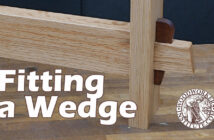In My Workshop with Dave Ness
We visit Dave Ness, a Florida woodworker, in his workshop and he tells us all about himself, his tools, his interests and his woodworking.
Watch the video above for all the details or read below for his story.
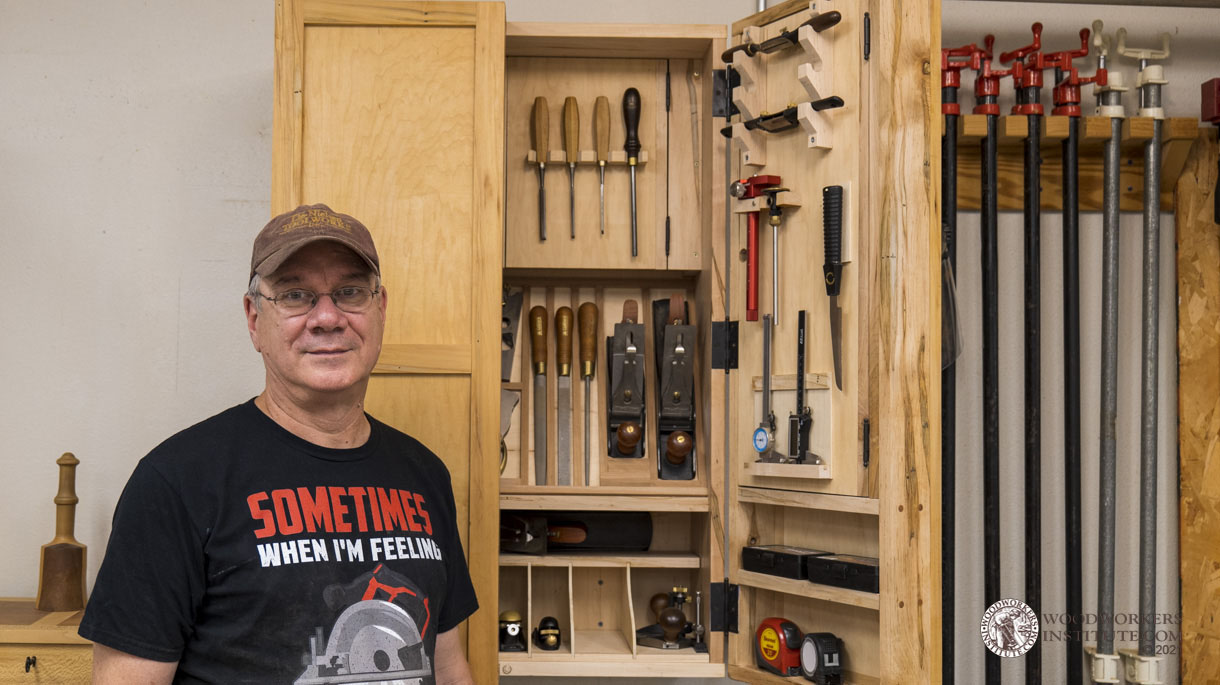
Dave Ness stores most of his hand tools in this custom tool cabinet
WWI: Can you tell us a little about yourself?
DN: I have been woodworking for about 17 years. I’m a lawyer, CPA, CFP by education and experience. Woodworking has provided a creative release and an opportunity to work with my hands. My shop is in our three-car garage. Over the years, the shop has slowly taken over the space to the point where only one car will fit and to make that happen requires the repositioning of three tools. Living in the southeastern United States, I’m blessed to have an air-conditioned shop. Generally, I build furniture and the occasional cabinet project. I also enjoy turning. But, if truth be told, I make whatever my wife tells me she needs.
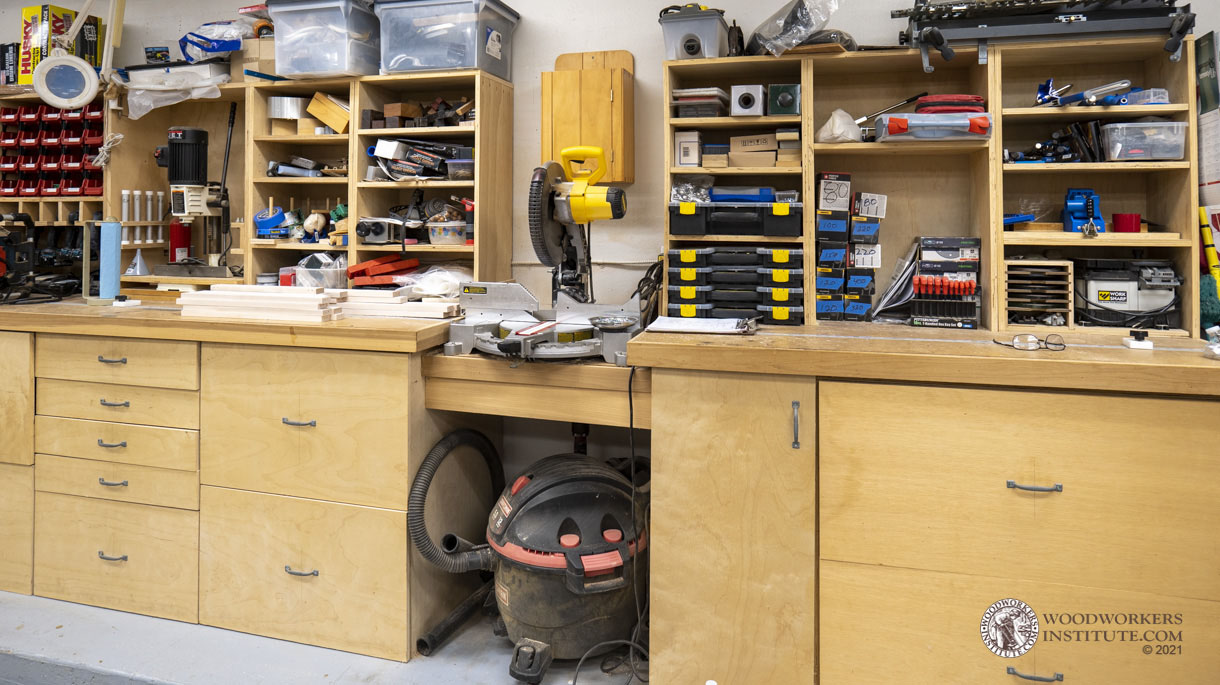
Cabinets with drawers and storage racks provide plenty of storage while serving as a miter saw station
WWI: How and when did you develop an interest in woodworking?
DN: Over the course of a few years in the early 2000s I had a chance to work with two of my brothers-in-law on some home improvement projects for various members of my wife’s family. At the time, I could barely tell a table saw from table salt. With the help of my brothers-in-law, I was able to learn enough to be at least somewhat helpful. I found I enjoyed the work, particularly the creative nature of the craft.
WWI: Tell us about your shop space and how it came to be.
DN: My shop is our former three car garage. At first, the shop shared the space with two cars, a lawn mower, a weed trimmer and the usual assortment of suburban garage paraphernalia. We built a shed to move the lawn and garden stuff out. I gave up my bay rather easily to make room for a workbench and lathe. More recently, and reluctantly, my wife lost her bay so I could put in a dust control system.
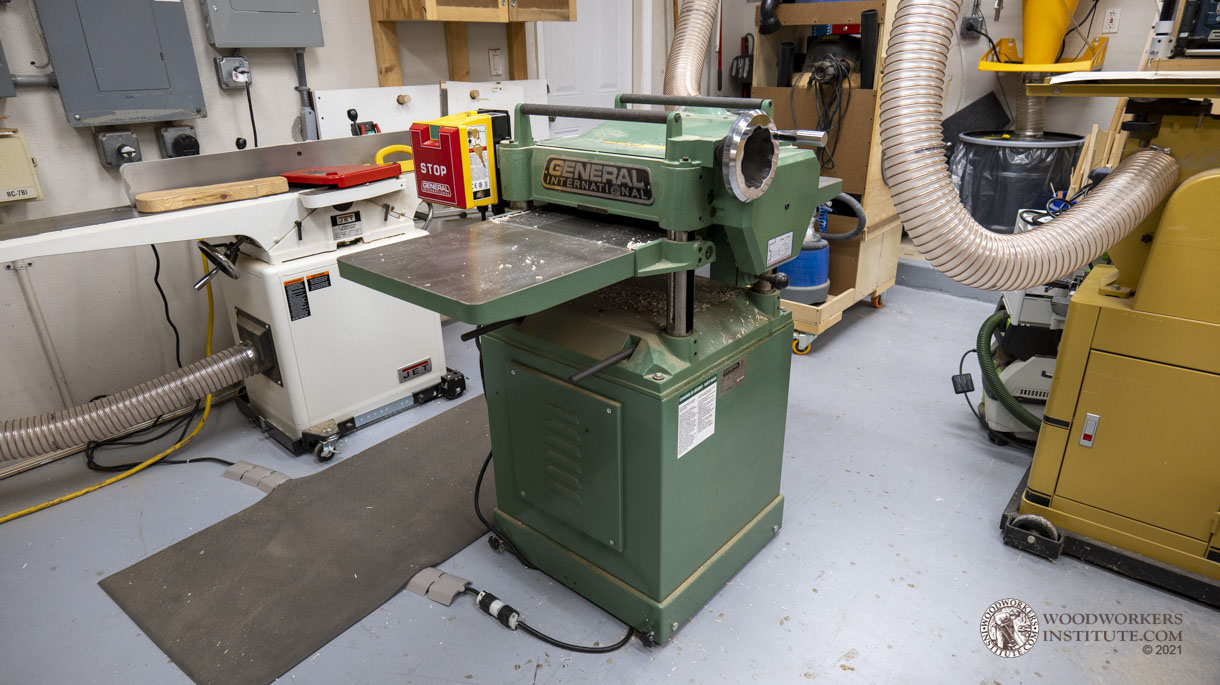
Dave’s 3-car garage houses an assortment of power tools
WWI: Do you use power tools exclusively or do you also use hand tools like hand planes, hand saws, etc.?DN: Generally, milling lumber and cutting to final size and width are done with power tools. Joinery and final surface prep are often done with hand tools.
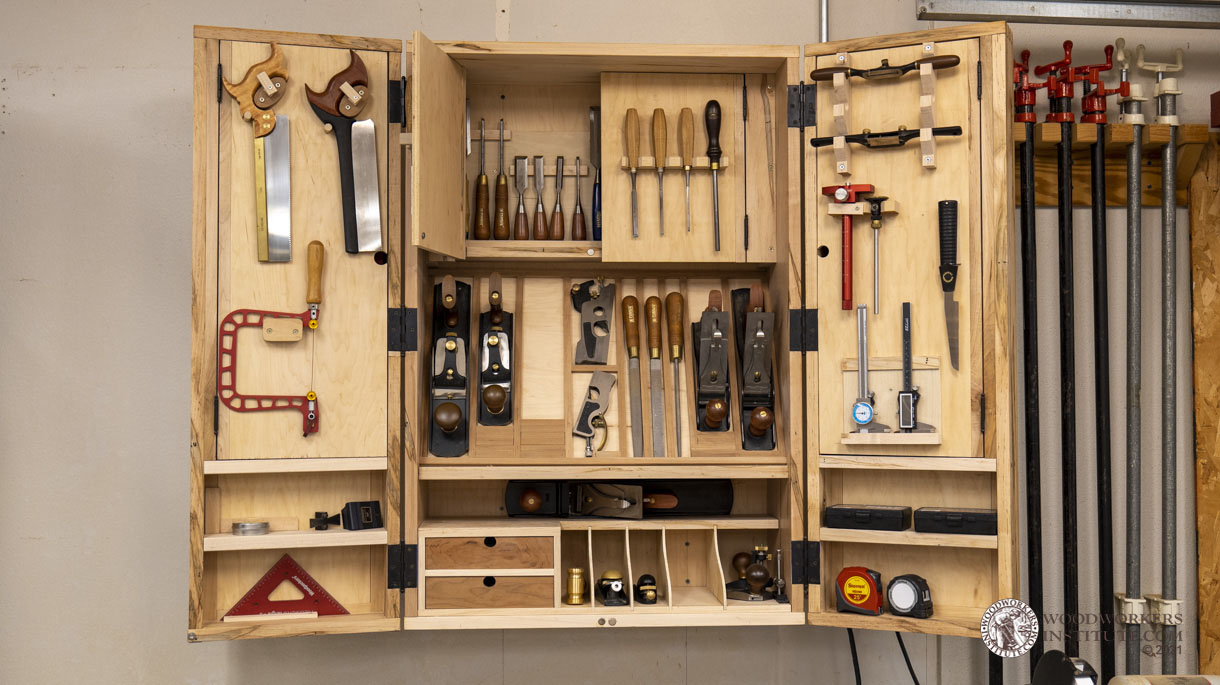
The tool cabinet features internal doors that open for access to a variety of chisels
WWI: What types of projects do you like to build?
DN: I build what my wife tells me to build. Sort of an even exchange for her garage bay. My favorite projects tend to be furniture and small boxes. I also like to turn whenever I get the chance. Most of my turning takes place between large furniture or cabinet projects.
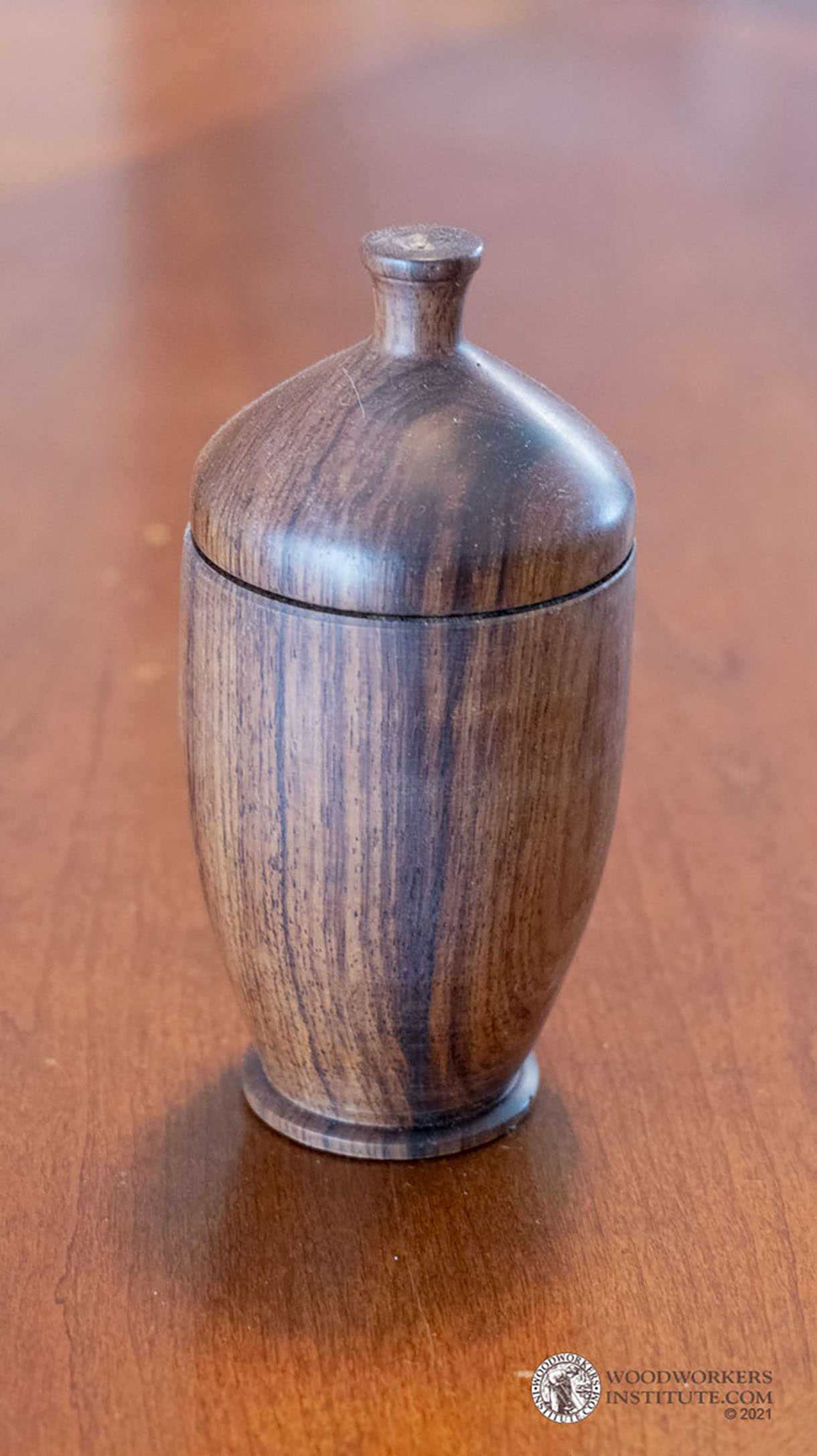
Dave enjoys turning when he’s in between furniture projects
WWI: What is your favorite wood, or other material, to work with?
DN: I prefer working with domestic hardwoods, particularly cherry and maple.
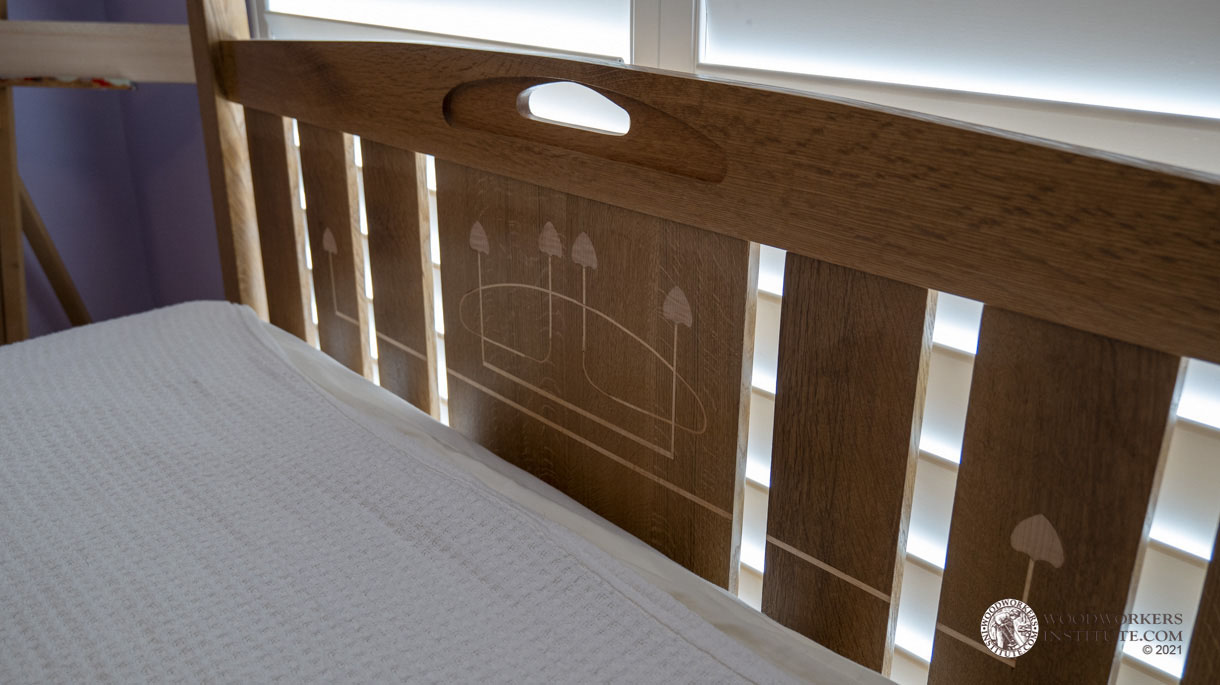
The inlay on this headboard adds a touch of elegance to the bed
WWI: What is your favorite power tool?
DN: I probably use the table saw more frequently than any other tool.
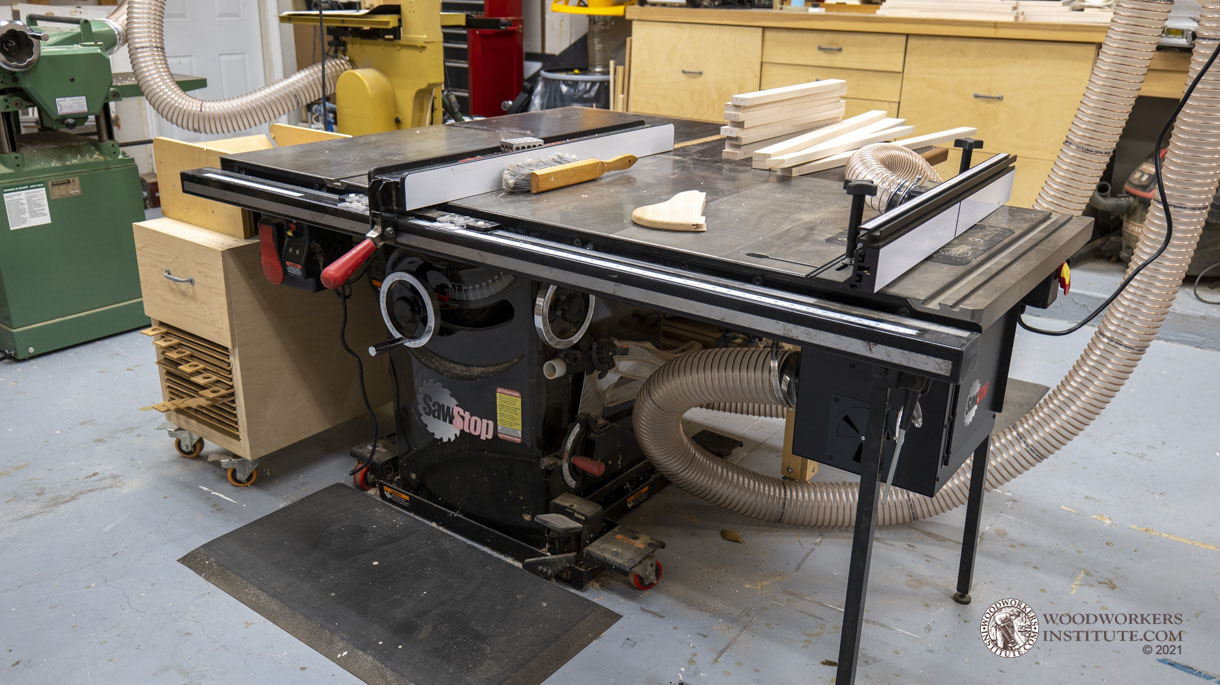
Adjacent to the SawStop table saw, Dave built a cabinet for storing accessories and saw blades. A large outfeed table offers plenty of support for long or large workpieces
WWI: What is your favorite hand tool?
DN: Low angle block plane
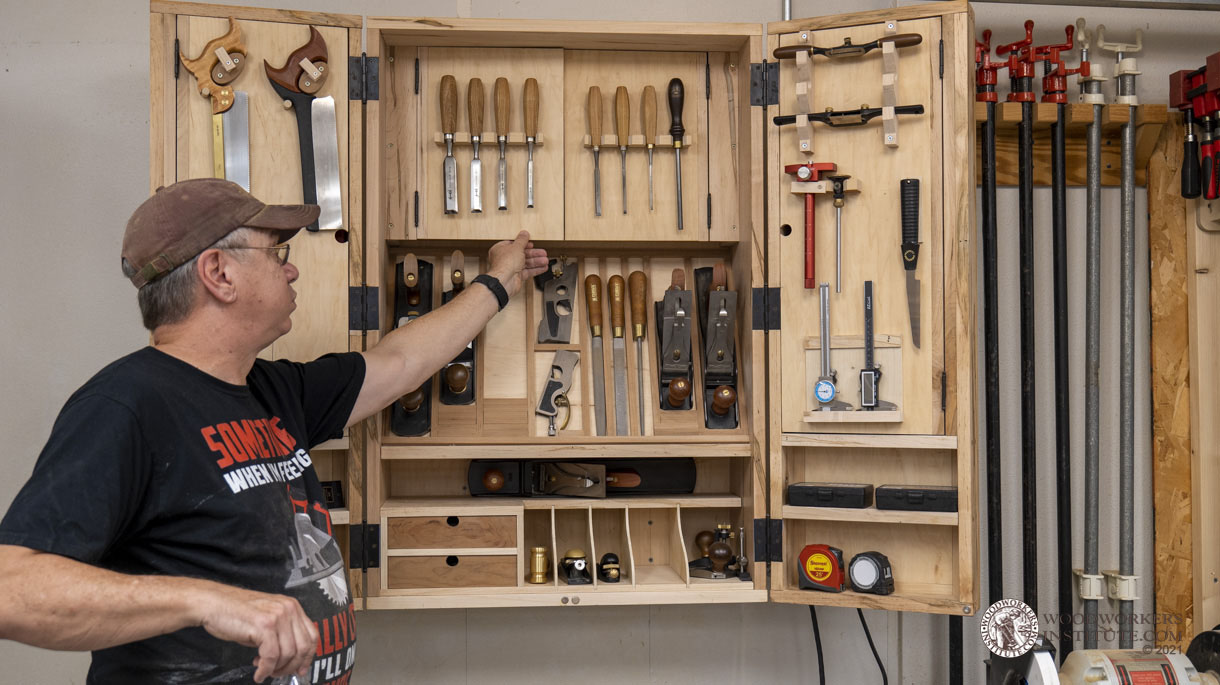
Dave keeps his cherished hand planes stored and protected in his tool cabinet
WWI: Do you listen to music while working and, if so, what?
DN: Yes, usually classical music from Bach to Beethoven to the Beatles
WWI: Do you prefer working on your own or with someone else?
DN: I generally work alone but having someone in the shop with me is a welcome change.
WWI: Who do you turn to for woodworking advice and why?
DN: Generally, I turn to my fellow members of the St. Petersburg Woodcrafters Guild. I will also consult my brother-in-law. He’s the person who helped start me on this journey. I will also talk to some of the people at the local Woodcraft store.
WWI: Who or what has inspired your woodworking and why?
DN: I have taken a number of woodworking classes at various schools around the country. I’ve been inspired by my teachers and classmates at these schools. Of course, we can’t forget Norm Abrams and the New Yankee Workshop. Loved that show.
WWI: What is your best quality when it comes to woodworking?
DN: The ability to solve problems – mostly those problems I have created for myself.
WWI: What is your worst quality?
DN: Impatience. This often leads to opportunities to solve problems.
WWI: If you could travel in time as a woodworker, to what year would you travel and why?
DN: I’d visit a Shaker village about 200 years or so ago. I love the simple beauty of Shaker design and admire their craftsmanship. I might even stick around if I could talk them out of the whole celibacy thing.
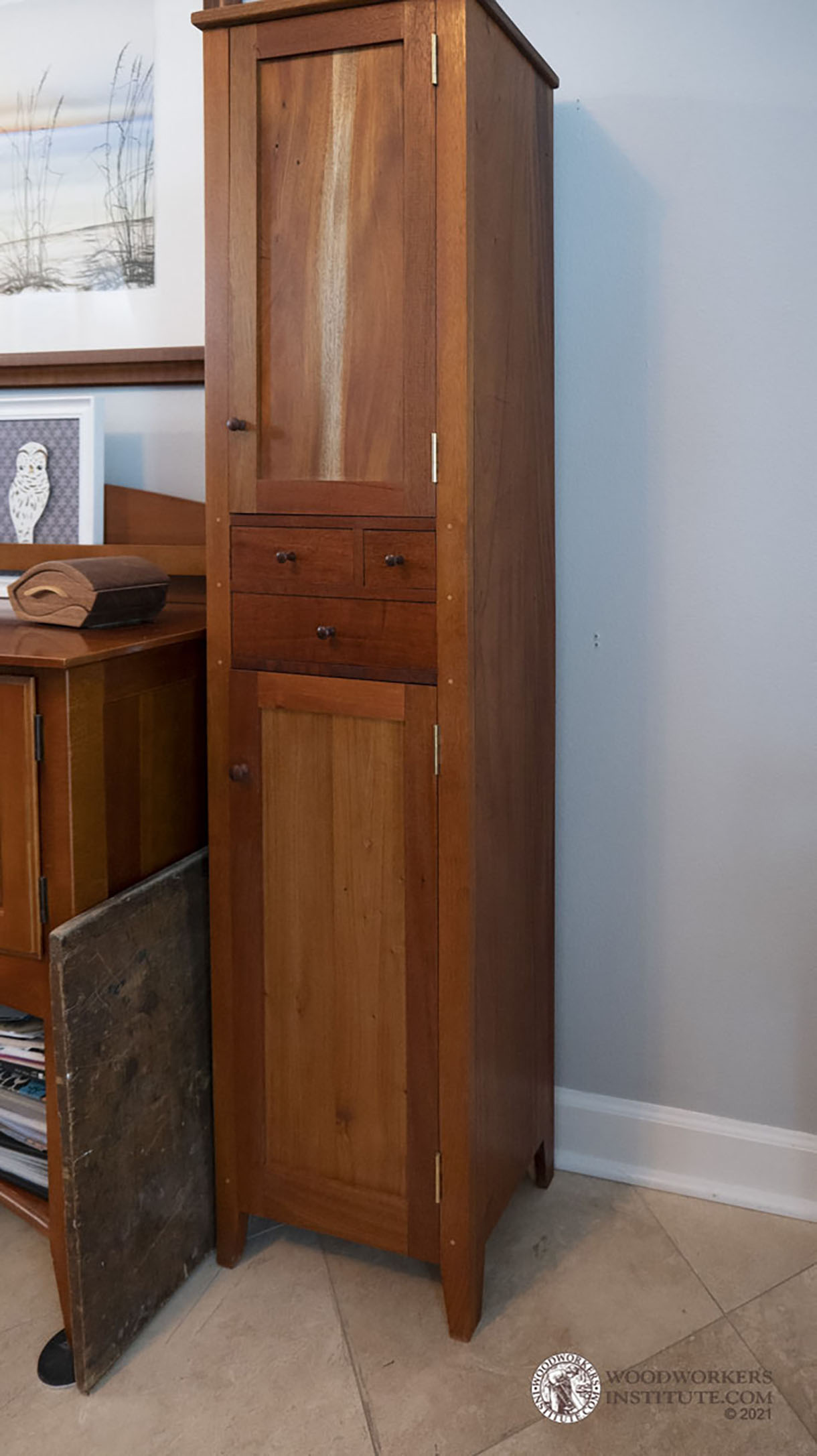
Dave appreciates the simple lines that are the hallmark of classic Shaker furniture
WWI: Do you sell your work? If so, how do you find clients?
DN: No. I have made things for non-family members but at most they might buy the materials. Family furniture is free.
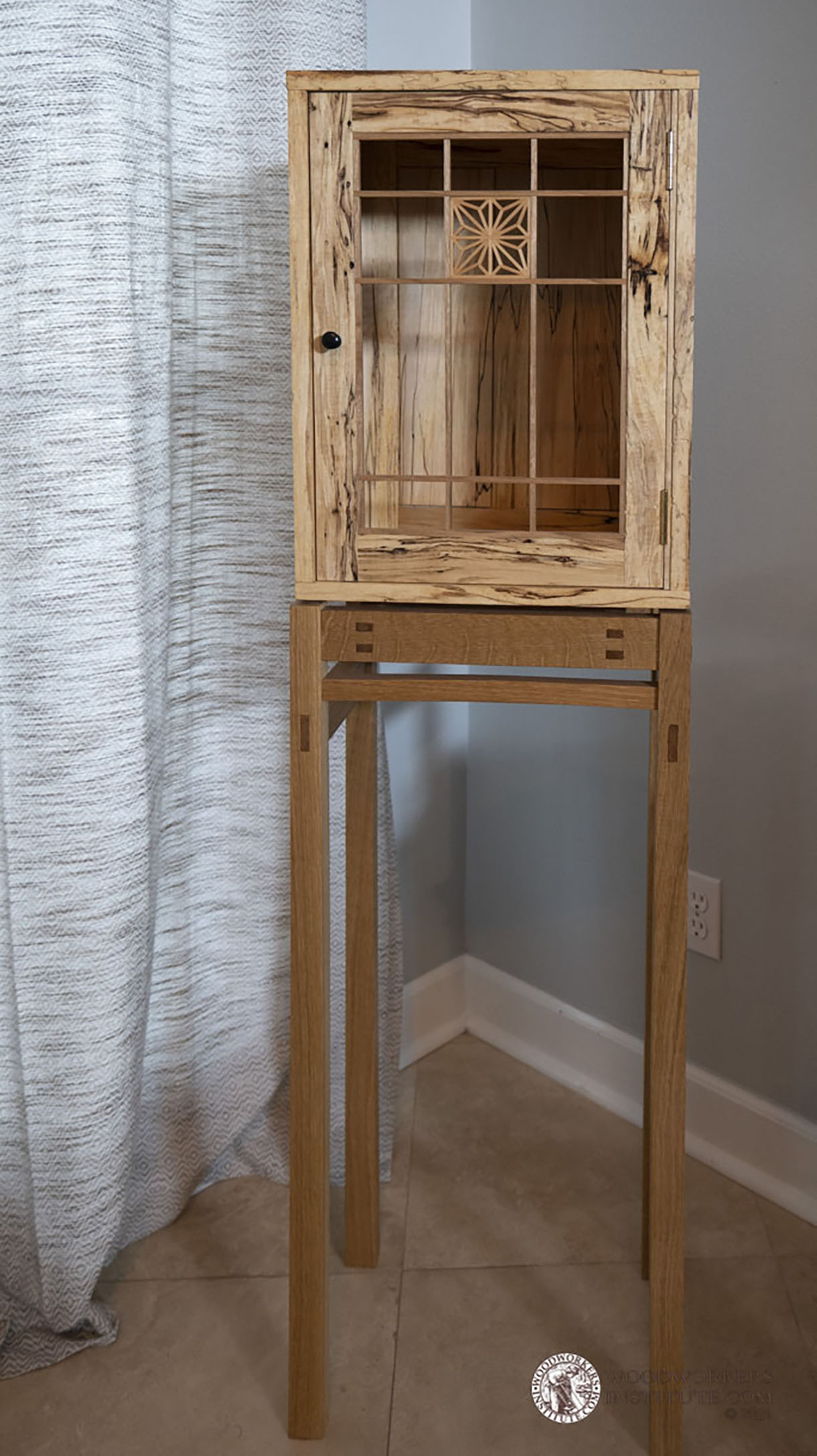
This spalted maple cabinet is highlighted but the Japanese-inspired Kumiko panel
WWI: Have you ever refused to make a project for someone and why?
DN: Yes. Neighbors have offered to pay me to make a variety of projects. I tell them I only build what my wife tells me to build for our family.
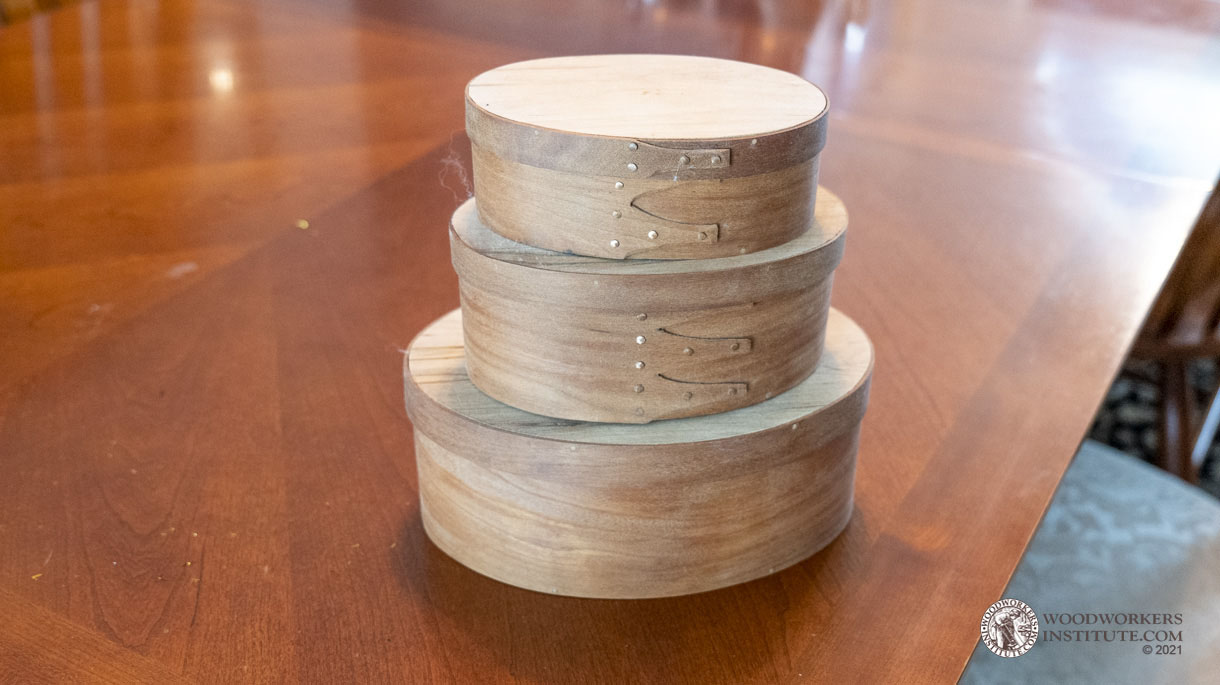
Dave enjoys making these Shaker-style boxes that prove not only beautiful in their simplicity, but functional as well
WWI: How did you learn your woodworking skills?
DN: What I didn’t pick up from trial and error (mostly error), I learned from my brother-in-law, members of the St. Petersburg Woodcrafters Guild, and attending various classes.
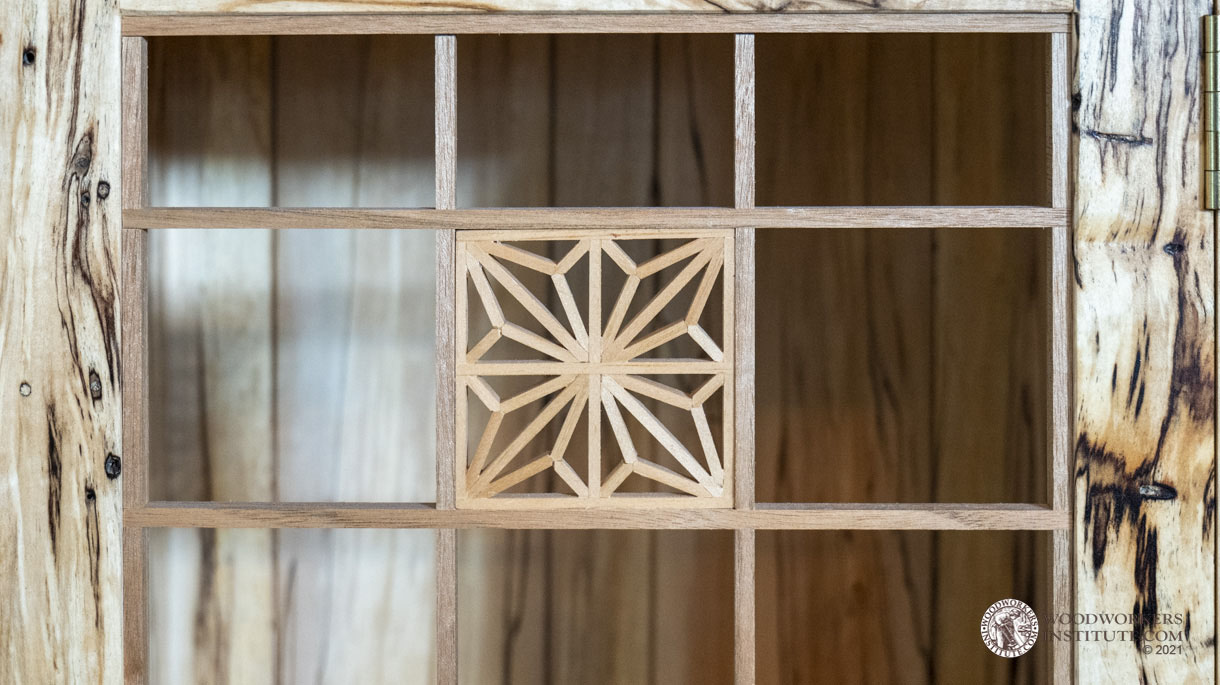
Learning Kumiko woodworking is one of Dave’s acquired skills
WWI: What woodworking websites are among your favorites?
DN: Woodworker’s Guild of America, Stumpy Nubs, Epic Woodworking, Wood Whisperer, Paul Sellers, Wood and Shop, Jay Bates, Marc Cremona, among others.
WWI: Are you tidy or messy?
DN: I like to keep an organized shop, but things become disheveled by mid-project. I will usually tidy up as I go from one major step to the next.
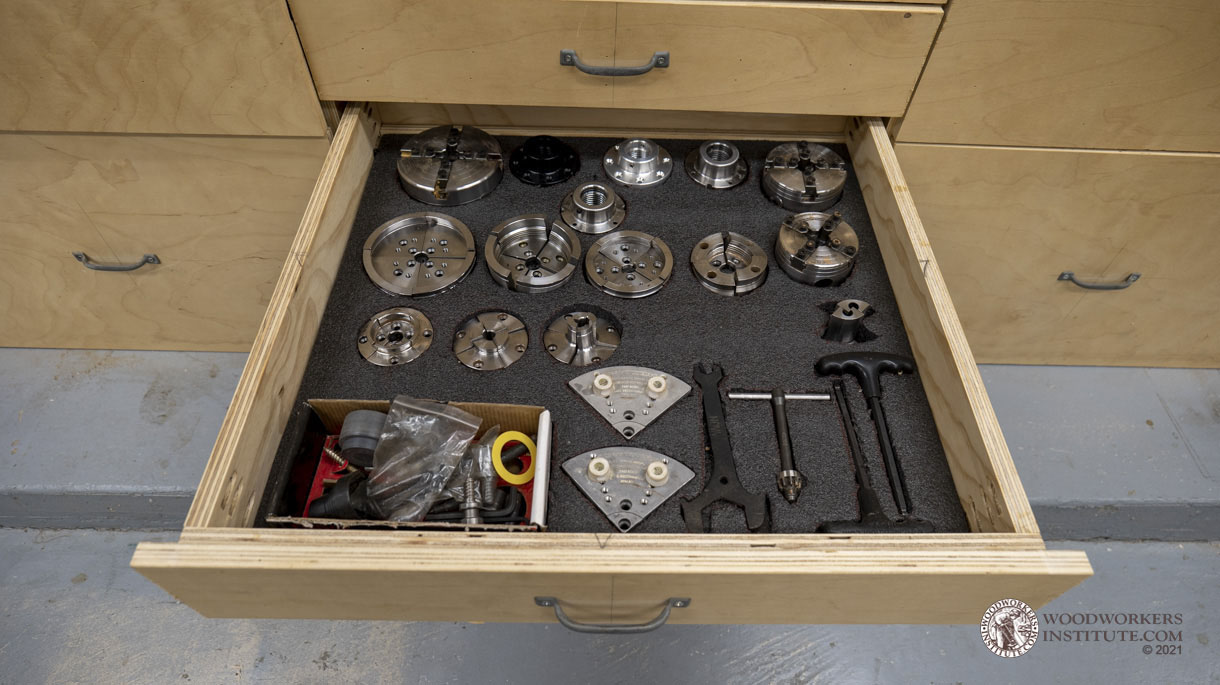
Drawer organization is one of Dave’s keys to always knowing were things belong
WWI: What work clothes do you wear in the workshop?
DN: Here in Florida, the uniform of the day consists of cargo shorts and a tee shirt with a Duluth Trading shop apron and the baseball cap du jour.
WWI: How do you transport lumber, supplies, and finished projects?
DN: In my pickup truck. Most of the finished projects, I just carry into the house.
WWI: Do you buy tools as you need them or do you buy them for future use when you see them?
DN: No project is worth doing unless it involves the purchase of at least one new tool. I generally buy tools as and when needed. I’ve found the shiny, cool stuff I bought (because I thought I’d need it someday), I don’t use very often.
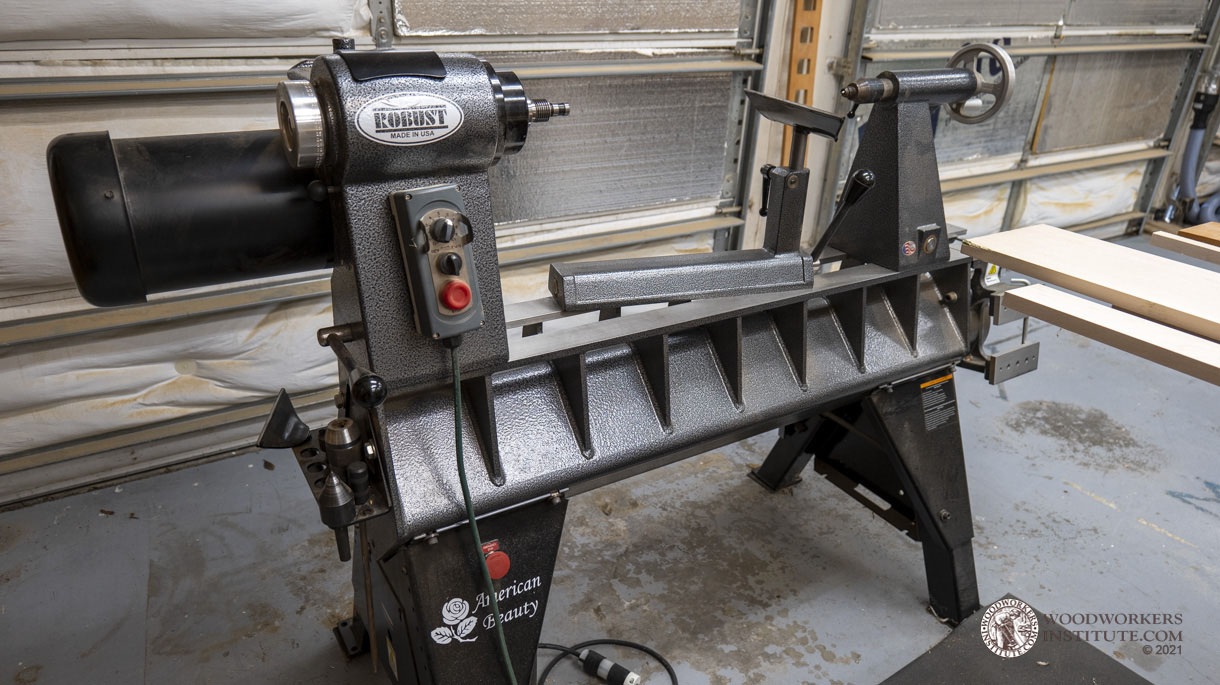
Dave invested in a heavy-duty lathe to hone his turning skills
WWI: How much do you have invested in your tools?
DN: More than I care to calculate. I just hope that someday after I’m gone, my wife doesn’t sell all my tools for what I told her I paid for them.
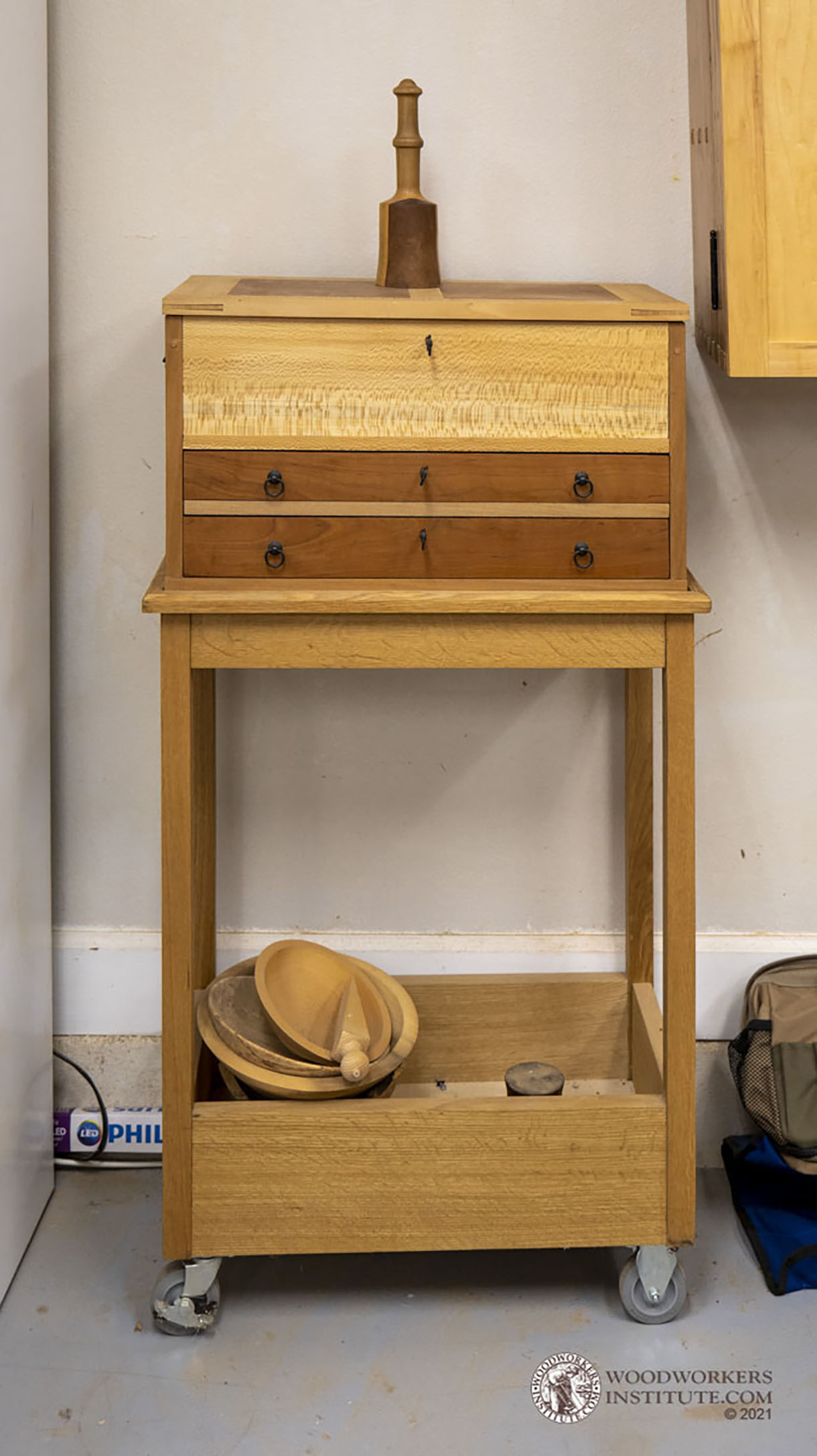
When Dave needs to travel with his hand tools to attend a class or demonstration, he uses this handy toolbox he custom-designed for his primary tools
WWI: Do you buy wood when you need it, or do you get it and store it?
DN: I will sometimes buy turning blanks because I like the look of them but generally, I buy the wood I need for a particular project. I don’t have the space to buy wood “on spec.”
WWI: Do you subscribe to woodworking magazines or memberships online? If so which ones?
DN: Fine Woodworking, Woodsmith, Wood, Popular Woodworking are the magazines and I pay a subscription for Fine Woodworking “unlimited” and the Woodworker’s Guild of America.
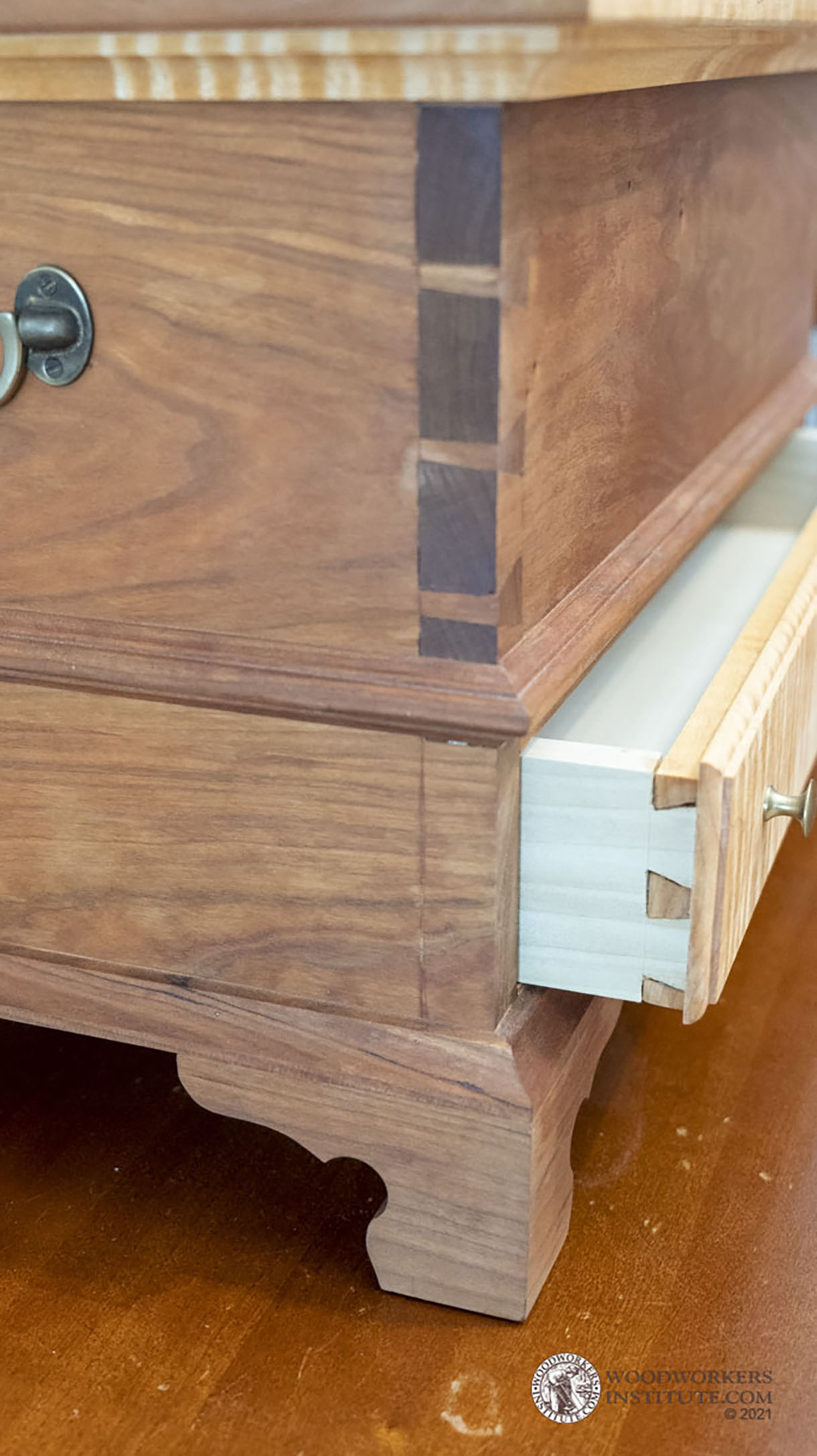
Using hand tools for fine joinery brings a lot of enjoyment to Dave’s time in the workshop
WWI: Do you read woodworking-related books, if so which ones?
DN: The How and Why of Woodworking by Mike Pekovich and Ellsworth on Woodturning by David Ellsworth
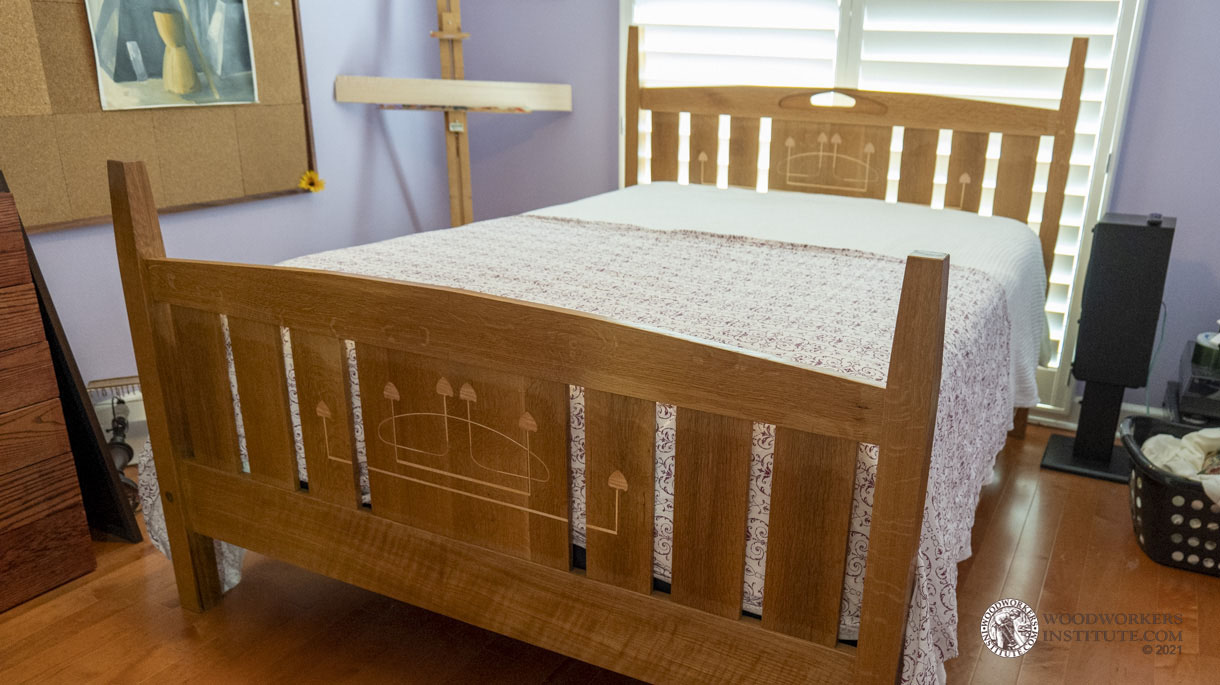
The headboard and footboard of this cherry bed feature similar inlay designs


